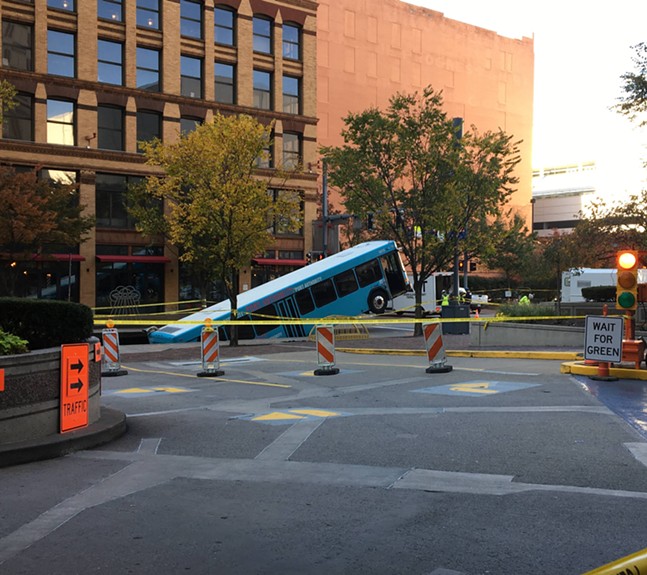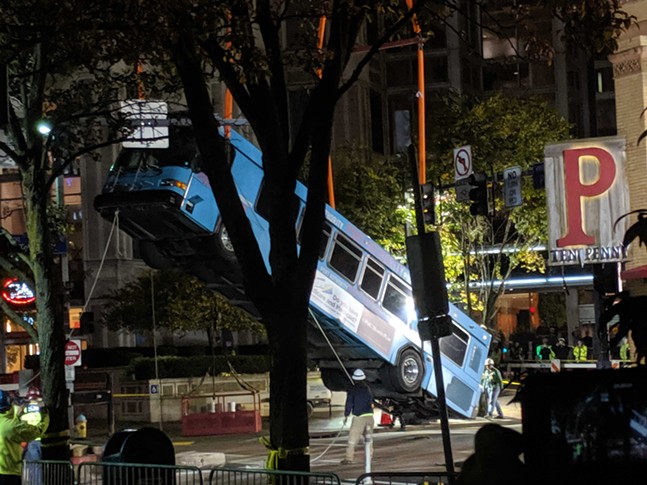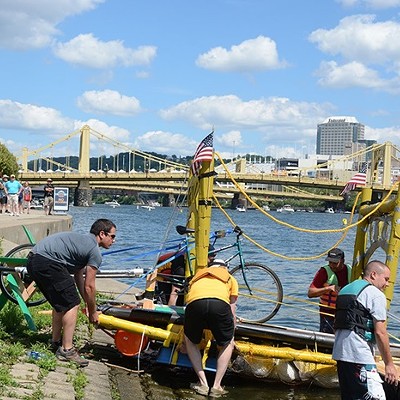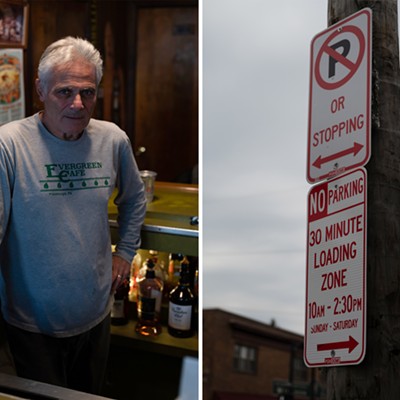According to Wendell Hissrich, Pittsburgh public safety director, the sinkhole is around 75-100 feet wide and 20 feet deep. In its lopsided state, the bus is resting on power lines and gas lines, causing a swath of buildings in the surrounding area to shut down their power. While the incident occurred a little before 8 a.m., the extraction process is complicated, and involves assembling a crane on-site to pull the bus out.
At 4:30 p.m., Hissrich held a press conference about the hole, saying that the crane had arrived, but it would take another three or four hours to assemble, and then 60-90 minutes to swing the crane up and bring it back down. He also said that the sinkhole involves Comcast and Verizon fiber-optic cables, and while they are currently intact, if damaged during extraction, "it could mean a problem with communications in the tri-state area." Tenth street will remain closed for an estimated one to two weeks.
So what is the deal with sinkholes? Why do they happen? How do they happen? Are they, like most earthly problems, caused by humans?
According to the Pennsylvania Department of Conservation and Natural Resources (DCNR), sinkholes are a “definitive part of Pennsylvania’s landscape known as karst.” And according to the National Parks Service, "a typical karst landscape forms when much of the water falling on the surface interacts with and enters the subsurface through cracks, fractures, and holes that have been dissolved into the bedrock."
DCNR states that the average size of a sinkhole in Pennsylvania is 4-20 feet in diameter, making the Downtown sinkhole at least three times bigger than the average maximum. They are relatively common in Pennsylvania, though usually much smaller — for a comprehensive documentation of sinkholes in the Pittsburgh area, check out @pwsasinkholes on Instagram, an unofficial account featuring sinkholes all around the city, usually blocked off by two or three traffic cones, sometimes with objects or sticks thrown into them.
Sinkholes are more common in urban areas and their likelihood can be increased by human development. According to the U.S. Geological Survey (USGS) webpage about sinkholes, "New sinkholes have been correlated to land-use practices, especially from groundwater pumping and from construction and development practices." Urban water supplies systems can especially become a problem. "Groundwater pumping for urban water supply and for irrigation can produce new sinkholes in sinkhole-prone areas," it states. "If pumping results in a lowering of groundwater levels, then underground structural failure, and thus, sinkholes, can occur."
In other regions, sinkholes, like earthquakes, have been linked to the oil and gas extraction known as fracking. In west Texas for example, in which the fracking process of injecting pressurized water into the ground is common, scientists have documented an increase in ground activity, including sinkholes. Florida is the state with the highest number of sinkholes, due to its especially porous bedrock, as well as heavy rains, and human activity.
2018 was the wettest year on record for Pittsburgh, and so far, 2019 isn't that far behind. Fracking continues to increase in the region, but not near the site of the sinkhole. There have also been a high number of water main breaks around the city.
Authorities are looking into what caused the sinkhole, as it remains unclear. When the bus fell, it caused a water main break, causing a rush of water under the bus, and there is some concern the bus could collapse further. We will update this story as more information about the sinkhole becomes available.
Update: At around 10 p.m. on Monday night, the bus was successfully extracted from the sinkhole. The crane lifted the bus out of the hole before carrying it through the air and slowly placing it onto the ground. When it was safely on the ground, the small crowd that gathered to watch the event began clapping.
While Hissrich originally said 10th Street would be closed for one to two weeks, Karina Ricks, the city's director of mobility and infrastructure, has now said the street will be closed for six to eight weeks.
















